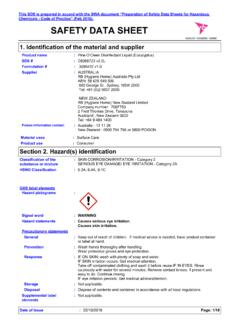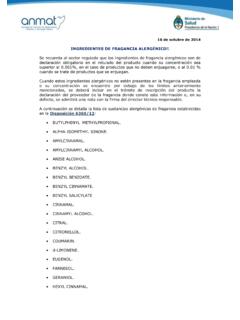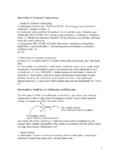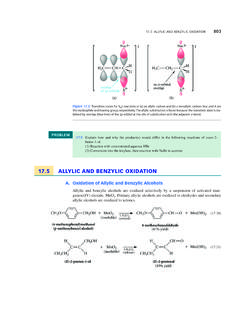Transcription of SAFETY DATA SHEET - rb-msds.com.au
1 Pine O Cleen Disinfectant1. Identification of the material and supplierSAFETY data SHEETP roduct namePine O Cleen Disinfectant:SDS no.:NamesMaterial usesSurface Disinfectant.:30441 - SD AU - 13 11 26 New Zealand - 0800 764 766 or 0800 POISON Poison Information contact::Formulation #:18354 - AU & 0351471 (LEMON)18350 - AU & 0284171 (PINE)153310 - AU & 0351467 (LAVENDER)151777 - AU & 0351468 (MOUNTAIN FRESH)151776 - AU & 0351472 (POT POURRI)10068 - AU & 0351466 (EUCALYPTUS)UPC Code / Sizes:500 mL, L PET bottle and capSupplier:AUSTRALIAR eckitt Benckiser (Australia) Pty LimitedABN: 17 003 274 655680 George St Sydney NSW 2000 Tel: +61 (0)2 9857 2000 NEW ZEALANDR eckitt Benckiser (New Zealand) Limited2 Fred Thomas Drive, Takapuna,Auckland, New Zealand 0622 Tel: +64 9 484 1400 Consumer.
2 Product useThis SDS is prepared in accord with the SWA document Preparation of SAFETY data Sheets for Hazardous Chemicals - Code of Practice (Feb 2016).Section 2. Hazard(s) identificationSKIN CORROSION/IRRITATION - Category 2 SERIOUS EYE DAMAGE/EYE IRRITATION - Category 2 AClassification of the substance or mixture:Signal word:WARNINGH azard statements:Causes serious eye skin pictograms:Precautionary statementsPrevention:Wear protective gloves. Wear eye or face protection. Wash hands thoroughly after :IF ON SKIN: Wash with plenty of soap and water. Take off contaminated contaminated clothing before reuse. If skin irritation occurs: Get medical attention. IF IN EYES: Rinse cautiously with water for several minutes.
3 Remove contact lenses, if present and easy to do. Continue rinsing. If eye irritation persists:Get medical label elementsGeneral:Read label before use. Keep out of reach of children. If medical advice is needed,have product container or label at of issuePage: 1/1015/12/2016:30441 - SD AU 2. Hazard(s) identificationStorage:Not :Not hazards which do not result in classification:None label elements:Ingredient DeclarationPer 100 g of product contains g of Benzalkonium ChlorideContains less than 5% Nonionic SurfactantsContains less than 5% EDTAC ontains less than 5% PhosphatesDisinfectantPerfumeContains Citronellol, Geraniol, Limonene and Linalool (Lavender Variant)Section 3.
4 Composition and ingredient informationquaternary ammonium compounds, benzyl-C8-18-alkyldimethyl, chlorides 368424-85-1 Ingredient nameCAS number Other Non-hazardous ingredients to 100%Substance/mixture:Occupational exposure limits, if available, are listed in Section (w/w)Wash out mouth with water. Remove dentures if any. Remove victim to fresh air and keep at rest in a position comfortable for breathing. If material has been swallowed and the exposed person is conscious, give small quantities of water to drink. Stop if the exposed person feels sick as vomiting may be dangerous. Do not induce vomiting unless directed to do so by medical personnel. If vomiting occurs,the head should be kept low so that vomit does not enter the lungs.
5 Get medical attention if adverse health effects persist or are severe. Never give anything by mouth to an unconscious person. If unconscious, place in recovery position and get medical attention immediately. Maintain an open airway. Loosen tight clothing such as a collar, tie, belt or flush eyes with plenty of water, occasionally lifting the upper and lower eyelids. Check for and remove any contact lenses. Continue to rinse for at least 10 minutes. Get medical contaminated skin with plenty of water. Remove contaminated clothing and shoes. Continue to rinse for at least 10 minutes. Get medical attention. Wash clothing before reuse. Clean shoes thoroughly before victim to fresh air and keep at rest in a position comfortable for not breathing, if breathing is irregular or if respiratory arrest occurs, provide artificial respiration or oxygen by trained personnel.
6 It may be dangerous to the person providing aid to give mouth-to-mouth resuscitation. Get medical attention if adverse health effects persist or are severe. If unconscious, place in recovery position and get medical attention immediately. Maintain an open airway. Loosen tight clothing such as a collar, tie, belt or 4. First aid measuresEye contactSkin contactInhalationIngestion::::Descriptio n of necessary first aid measuresMost important symptoms/effects, acute and delayedInhalation:No known significant effects or critical contact:Causes skin serious eye irritation.:Eye contactPotential acute health effectsDate of issuePage: 2/1015/12/2016:30441 - SD AU 4. First aid measuresProtection of first-aiders:No action shall be taken involving any personal risk or without suitable training.
7 It may be dangerous to the person providing aid to give mouth-to-mouth to physician:Treat symptomatically. Contact poison treatment specialist immediately if large quantities have been ingested or treatments:No specific known significant effects or critical hazards.:IngestionOver-exposure signs/symptomsSkin contactIngestionInhalationNo specific specific symptoms may include the following:irritationredness:::Eye contact:Adverse symptoms may include the following:pain or irritationwateringrednessSee toxicological information (Section 11)Indication of immediate medical attention and special treatment needed, if necessarySection 5. Firefighting measuresPromptly isolate the scene by removing all persons from the vicinity of the incident if there is a fire.
8 No action shall be taken involving any personal risk or without suitable thermal decomposition productsSpecific hazards arising from the chemicalNo specific a fire or if heated, a pressure increase will occur and the container may should wear appropriate protective equipment and self-contained breathing apparatus (SCBA) with a full face-piece operated in positive pressure protective equipment for fire-fightersUse an extinguishing agent suitable for the surrounding media:::None extinguishing media:Unsuitable extinguishing media:Special protective actions for fire-fighters:Section 6. Accidental release measuresEnvironmental precautionsPersonal precautions, protective equipment and emergency procedures::No action shall be taken involving any personal risk or without suitable surrounding areas.
9 Keep unnecessary and unprotected personnel from entering. Do not touch or walk through spilt material. Avoid breathing vapour or mist. Provide adequate ventilation. Wear appropriate respirator when ventilation is inadequate. Put on appropriate personal protective dispersal of spilt material and runoff and contact with soil, waterways, drains and sewers. Inform the relevant authorities if the product has caused environmental pollution (sewers, waterways, soil or air).For non-emergency personnelFor emergency responders:If specialised clothing is required to deal with the spillage, take note of any information in Section 8 on suitable and unsuitable materials. See also the information in "For non-emergency personnel".
10 Date of issuePage: 3/1015/12/2016:30441 - SD AU 6. Accidental release measuresStop leak if without risk. Move containers from spill area. Approach the release from upwind. Prevent entry into sewers, water courses, basements or confined areas. Wash spillages into an effluent treatment plant or proceed as and collect spillage with non-combustible, absorbent material sand,earth, vermiculite or diatomaceous earth and place in container for disposal according to local regulations (see Section 13). Dispose of via a licensed waste disposal contractor. Contaminated absorbent material may pose the same hazard as the spilt product. Note: see Section 1 for emergency contact information and Section 13 for waste spill:Stop leak if without risk.












